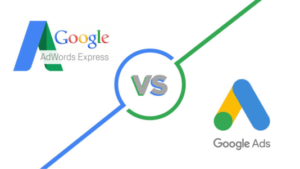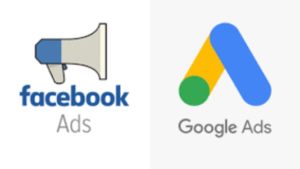Pay-Per-Click (PPC) advertising is a highly effective digital marketing strategy that can drive targeted traffic to your website and increase conversions. One of the most popular platforms for PPC advertising is Google Ads (formerly known as Google AdWords). Google Ads offers a powerful set of tools and features that, when utilized effectively, can help you reach your marketing goals and maximize your return on investment (ROI).
In this guide, we will provide you with comprehensive tips and tricks for mastering Google Ads. We will cover various aspects of PPC advertising, from campaign setup to optimization strategies. Throughout the guide, we will include practical examples to illustrate the concepts and techniques discussed. By the end, you will have a solid foundation for running successful PPC campaigns on Google Ads.
Table of Contents:
I. Understanding Google Ads
- Introduction to Google Ads
- Types of Google Ads Campaigns
- Google Ads Account Structure
II. Setting Up Your Google Ads Campaign
- Defining Goals and Objectives
- Keyword Research
- Campaign Settings
- Ad Group Structure
- Ad Copy and Ad Extensions
III. Creating Compelling Ads
- Ad Formats and Ad Components
- Writing Engaging Ad Copy
- Ad Extensions and their Benefits
- Ad Quality and Relevance
IV. Optimizing Your Campaigns
- Monitoring Performance with Google Ads Metrics
- Conversion Tracking and Attribution
- A/B Testing
- Quality Score and Ad Rank
- Bid Management Strategies
V. Targeting and Audience Optimization
- Demographic Targeting
- Geographic Targeting
- Device Targeting
- Remarketing and Audience Segmentation
VI. Advanced Google Ads Techniques
- Dynamic Search Ads
- Display Advertising
- Shopping Ads
- Video Ads
VII. Leveraging Google Ads Tools
- Keyword Planner
- Google Ads Editor
- Ad Customizers
- Google Analytics Integration
- Automated Rules and Scripts
VIII. Tracking and Measuring Success
- Key Performance Indicators (KPIs)
- Conversion Tracking
- Google Ads Reporting
- Campaign Optimization Based on Data
IX. Budgeting and Cost Management
- Setting Budgets
- Bidding Strategies
- Cost Per Acquisition (CPA) vs. Return on Ad Spend (ROAS)
- Budget Optimization Techniques
X. Staying Up-to-Date with Google Ads
- Industry News and Updates
- Google Ads Certification Program
- Online Communities and Resources
I. Understanding Google Ads
- Introduction to Google Ads:
Google Ads is an online advertising platform developed by Google that allows businesses to display ads on Google’s search engine and partner websites. It operates on a pay-per-click model, meaning you only pay when someone clicks on your ad. Google Ads provides a wide range of targeting options and ad formats to help you reach your desired audience effectively.
- Types of Google Ads Campaigns:
Google Ads offers various campaign types to suit different marketing objectives. These include Search Network campaigns, Display Network campaigns, Video campaigns, Shopping campaigns, and App campaigns. Each campaign type serves a unique purpose and allows you to showcase your ads on different platforms and formats.
- Google Ads Account Structure:
To organize your Google Ads campaigns effectively, it’s important to understand the account structure. Google Ads accounts consist of campaigns, which are further divided into ad groups. Ad groups contain specific keywords and ads that are closely related. This structure allows you to manage and optimize your campaigns more efficiently.
II. Setting Up Your Google Ads Campaign
- Defining Goals and Objectives:
Before setting up a campaign, clearly define your goals and objectives. Are you looking to increase website traffic, generate leads, or boost sales? By understanding your goals, you can tailor your campaign settings, targeting, and ad copy to align with your objectives.
- Keyword Research:
Keyword research is crucial for targeting the right audience. Use tools like Google Keyword Planner to identify relevant keywords that align with your business and audience intent. Include a mix of broad and specific keywords to capture a wider range of search queries.
- Campaign Settings:
When setting up your campaign, pay attention to campaign settings such as geographic targeting, language preferences, and budget allocation. Customize these settings based on your target audience and campaign objectives.
- Ad Group Structure:
Organize your campaign into ad groups based on closely related keywords. This allows you to create highly targeted ad copy and landing pages for each ad group, improving relevance and increasing click-through rates.
- Ad Copy and Ad Extensions:
Craft compelling ad copy that highlights your unique selling points and encourages users to click. Experiment with different messaging strategies, including benefits, offers, and calls to action. Utilize ad extensions like sitelink extensions, call extensions, and structured snippets to enhance your ads and provide additional information to users.
III. Creating Compelling Ads
- Ad Formats and Ad Components:
Google Ads offers various ad formats, including text ads, responsive search ads, display ads, video ads, and shopping ads. Understand the different ad components for each format, such as headlines, descriptions, images, and call-to-action buttons. Optimize these components to create engaging and visually appealing ads.
- Writing Engaging Ad Copy:
Write ad copy that is concise, compelling, and relevant to the user’s search query. Use strong, action-oriented language and highlight unique selling points. Include keywords in your ad copy to improve ad relevance and quality score.
- Ad Extensions and their Benefits:
Ad extensions provide additional information and options for users to engage with your ads. Experiment with different ad extensions to improve visibility, click-through rates, and user experience. Some popular extensions include sitelink extensions, call extensions, location extensions, and price extensions.
- Ad Quality and Relevance:
Google evaluates the quality and relevance of your ads through its Quality Score system. Focus on creating high-quality ads that are relevant to the keywords, landing pages, and user search intent. Higher quality ads can result in better ad positions and lower costs.
IV. Optimizing Your Campaigns
- Monitoring Performance with Google Ads Metrics:
Regularly monitor your campaign performance using key metrics such as click-through rate (CTR), conversion rate, average position, and cost per conversion. Identify areas of improvement and make data-driven decisions to optimize your campaigns.
- Conversion Tracking and Attribution:
Implement conversion tracking to measure the success of your campaigns. Set up conversion tracking codes to track actions such as form submissions, purchases, or newsletter sign-ups. Use attribution models to understand the contribution of different touchpoints in the user journey.
- A/B Testing:
A/B testing involves creating multiple variations of your ads, landing pages, or ad elements to test their performance. Test different headlines, descriptions, images, or landing page layouts to identify the most effective elements and optimize your campaigns accordingly.
- Quality Score and Ad Rank:
Google assigns a Quality Score to your ads based on factors like click-through rate, ad relevance, and landing page experience. A higher Quality Score can lead to better ad positions and lower costs. Focus on improving Quality Score through relevant keywords, ad copy, and landing page optimization.
- Bid Management Strategies:
Experiment with different bidding strategies, such as manual bidding, automated bidding, or target CPA bidding. Adjust your bids based on performance data, competitor analysis, and campaign goals. Continuously monitor and optimize your bids to maximize ROI.
V. Targeting and Audience Optimization
- Demographic Targeting:
Refine your targeting by demographics such as age, gender, and household income. Analyze your audience data and adjust your bids, ad copy, and targeting settings to reach your most valuable demographics.
- Geographic Targeting:
Target specific locations based on your target audience and business goals. Utilize location targeting options, such as country, city, radius targeting, or exclude specific regions where your product or service is not available.
- Device Targeting:
Optimize your campaigns for different devices, including desktops, mobile devices, and tablets. Analyze performance metrics by device and adjust bids and ad copy accordingly. Consider creating mobile-specific ads or using mobile bid adjustments.
- Remarketing and Audience Segmentation:
Implement remarketing campaigns to target users who have previously visited your website. Segment your audience based on their behavior, interests, or engagement level to deliver personalized ads and increase conversions.
VI. Advanced Google Ads Techniques
- Dynamic Search Ads:
Dynamic Search Ads automatically generate ad headlines and landing pages based on the content of your website. This approach is useful for large websites with frequently changing inventory or services.
- Display Advertising:
Utilize Google’s Display Network to reach a broader audience through visually appealing banner ads, text ads, and rich media ads. Implement targeting options and creative strategies to maximize reach and engagement.
- Shopping Ads:
If you sell products online, consider setting up Shopping campaigns. Showcase your products with images, prices, and relevant information directly in Google’s search results. Optimize your product feed and bidding strategies to increase visibility and drive sales.
- Video Ads:
Video ads on platforms like YouTube can be highly engaging and effective. Create compelling video content that resonates with your target audience and aligns with your campaign goals. Use targeting options and ad formats specific to video ads to optimize performance.
VII. Leveraging Google Ads Tools
- Keyword Planner:
Google’s Keyword Planner tool helps you discover relevant keywords, estimate search volume, and analyze keyword trends. Use this tool during keyword research to identify valuable keywords for your campaigns.
- Google Ads Editor:
Google Ads Editor is a desktop application that allows you to manage and make bulk changes to your campaigns offline. It simplifies campaign management, ad creation, and optimization tasks.
- Ad Customizers:
Ad customizers allow you to dynamically insert customized information into your ads, such as countdown timers, pricing, or location-specific details. This personalization can increase ad relevance and drive conversions.
- Google Analytics Integration:
Integrate Google Analytics with your Google Ads account to gain valuable insights into user behavior, website performance, and conversion tracking. Utilize this data to optimize your campaigns and make data-driven decisions.
- Automated Rules and Scripts:
Google Ads provides automated rules and scripts that can help you automate routine tasks, such as adjusting bids based on performance metrics, pausing underperforming keywords, or generating customized reports. Leverage these tools to save time and improve campaign efficiency.
VIII. Tracking and Measuring Success
- Key Performance Indicators (KPIs):
Identify and track key performance indicators that align with your campaign goals. Common KPIs include click-through rate (CTR), conversion rate, cost per conversion (CPA), return on ad spend (ROAS), and lifetime value (LTV) of customers.
- Conversion Tracking:
Implement conversion tracking codes to accurately measure the performance of your campaigns. Track actions that align with your business goals, such as purchases, form submissions, or app downloads.
- Google Ads Reporting:
Regularly review and analyze your campaign performance through Google Ads reporting. Utilize the various reports available, such as campaign performance, ad group performance, keyword performance, and demographic performance.
- Campaign Optimization Based on Data:
Make data-driven decisions to optimize your campaigns. Identify underperforming keywords, ad groups, or targeting settings, and make necessary adjustments. Test different strategies, track results, and iterate based on performance data.
IX. Budgeting and Cost Management
- Setting Budgets:
Define a clear budget for your campaigns based on your overall marketing goals and financial capacity. Consider allocating budgets to different campaigns or ad groups based on their performance and priorities.
- Bidding Strategies:
Experiment with different bidding strategies, such as manual bidding, automated bidding, or target CPA bidding. Choose the strategy that aligns with your goals and yields the best results for your campaigns.
- Cost Per Acquisition (CPA) vs. Return on Ad Spend (ROAS):
Understand the difference between CPA and ROAS as metrics for measuring campaign success. CPA focuses on the cost of acquiring a customer, while ROAS measures the revenue generated per advertising dollar spent. Choose the metric that aligns with your business model and objectives.
- Budget Optimization Techniques:
Optimize your budget allocation by analyzing campaign performance, identifying top-performing keywords or ad groups, and reallocating budgets accordingly. Monitor your campaigns closely to ensure that your budget is being utilized effectively.
X. Staying Up-to-Date with Google Ads
- Industry News and Updates:
Stay informed about the latest news, updates, and trends in the digital advertising industry, specifically related to Google Ads. Follow reputable blogs, industry publications, and Google’s official announcements to stay ahead of the curve.
- Google Ads Certification Program:
Consider obtaining Google Ads certifications to showcase your expertise and stay updated with the latest best practices. Google offers certifications for various aspects of Google Ads, including fundamentals, search, display, video, and shopping advertising.
- Online Communities and Resources:
Engage with online communities and forums where marketers and advertisers discuss Google Ads strategies, share insights, and ask questions. Participate in discussions, share your experiences, and learn from others in the industry.
Conclusion:
Mastering Google Ads requires a combination of knowledge, strategic thinking, and continuous optimization. By following the tips and tricks outlined in this guide and implementing them in your campaigns, you can maximize the effectiveness of your PPC advertising efforts on Google Ads. Remember to regularly analyze your campaign performance, experiment with different strategies, and adapt to the ever-evolving landscape of digital advertising. With dedication and practice, you can achieve your marketing objectives and drive meaningful results through Google Ads.



